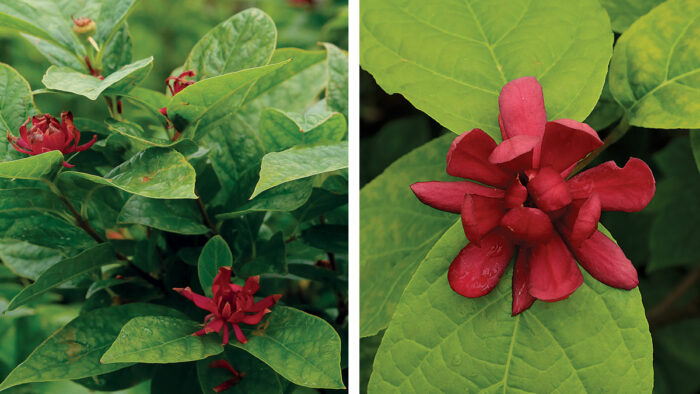
Woody plants take up a lot of space for a lot of years, so here at the Chicago Botanic Garden we must be choosy about which shrubs we try. A sweetshrub trial had been on our short list for a while, so when some beds opened a few years ago, I knew the time had come. Eastern sweetshrub, otherwise known as Carolina allspice (Calycanthus floridus), is a bit of a peculiar native, featuring deliciously fragrant maroon flowers in late spring on a suckering, multistemmed shrub. Cultivars have been selected for purple leaves, strong fragrance, and novel flower colors, which so far include creamy white, yellow, and red. Breeders have brought together our natives—eastern sweetshrub and California sweetshrub (C. occidentalis)—and an Asian species (C. chinensis) to create some hearty cultivars that offer up bigger flowers on larger plants.
At a glance
Calycanthus spp. and cvs.
Zones: Eastern sweetshrub is winter hardy in Zones 4–9 but may suffer some dieback or injuries in the colder areas. The
hybrids are considered less cold tolerant, but all have been hardy in our Zone 5 garden.
Conditions: Full sun to partial shade; adaptable to a wide range of soil types but prefers moist, well-drained soil; tolerant of
alkaline pH
Native range: North America, Asia
Pests and diseases: These shrubs have few pest or disease problems and are even deer resistant. Tar spotting on leaves and flowers can occur but is mostly cosmetic. The yellowish-green to creamy-white flowers of ‘Athens’ and ‘Venus’ were more prone to tar spotting than those of maroon-flowered cultivars.
| Trial Parameters |Since 2018, the Chicago Botanic Garden has evaluated 13 different sweetshrubs in comparative trials. Cold hardiness, especially pertaining to the hybrid cultivars, was a focus of our trial.
|
More plant trial results
Plant Trial Results: The Best of the Best Plants for Every Garden
Top Plant Plant Trial for Northern Plains
The Best Summer Alliums to Grow: Plant Trials
A fragrant floral display makes them noteworthy
When I encountered the curious brownish-red flowers of eastern sweetshrub for the first time, they seemed like something only a fly or beetle would appreciate. Imagine my surprise when the scent was like Juicy Fruit gum and not carrion. Over the years, my evaluators have described the floral scents of sweetshrubs as chocolate-cinnamon-licorice, apple, plum, musk melon, cranberry, burnt sugar, soap, sweet berries, and umami. Fragrance is subjective and personal, and it may register as heavy, subtle, or altogether elusive to different people. However, we agreed that eastern sweetshrub selections generally have a stronger scent than the hybrids, and that warm temperatures can intensify the fragrance.
Sweetshrub flowers could be described as resembling magnolia or lotus flowers in shape, with strappy tepals (petals and sepals that look the same) that unfurl gradually from plump oval buds. The main flower show is on old stems in late spring, with sporadic flowering on new growth occurring in midsummer.
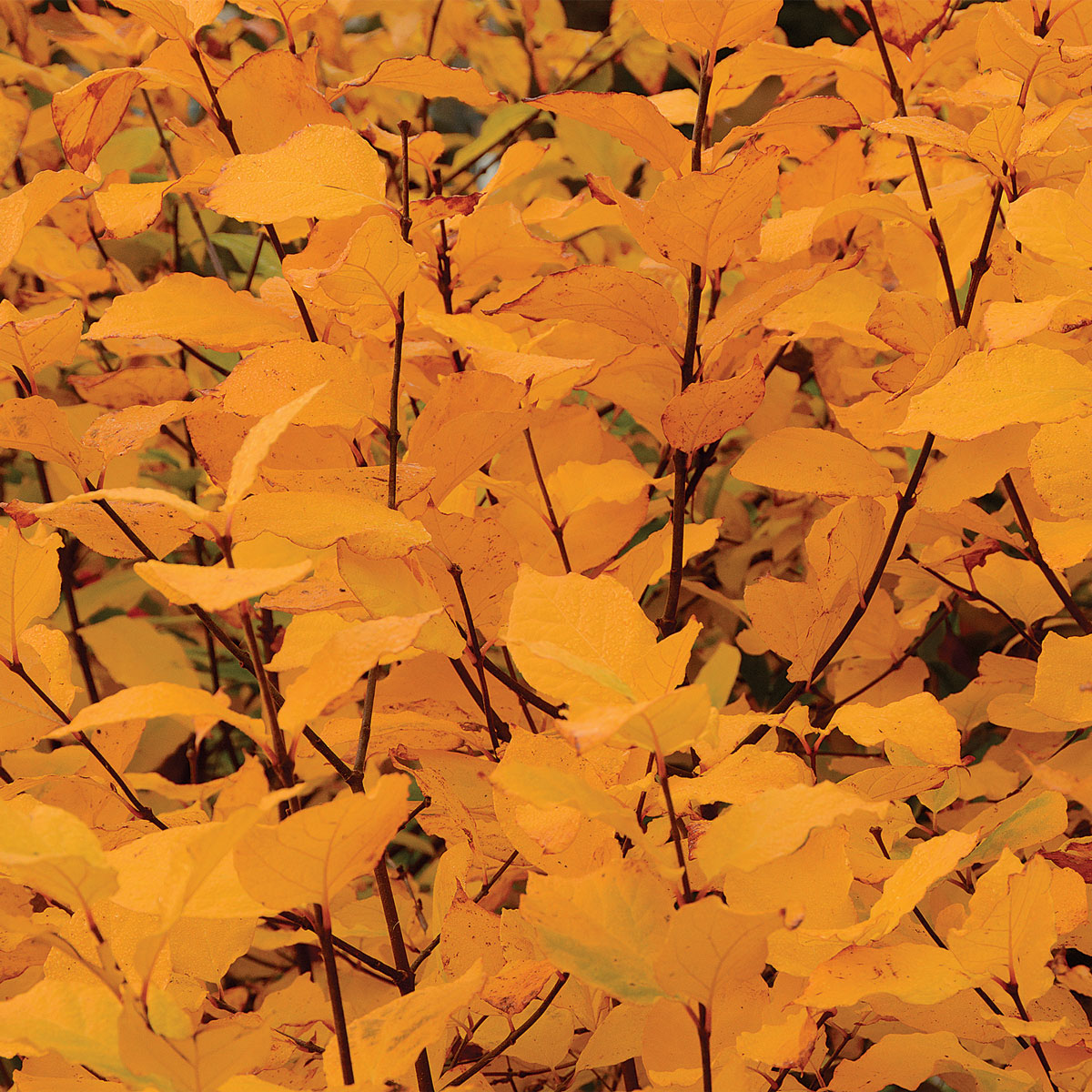 |
 |
Interesting fruit and foliage extend the seasonal interest
The leathery, veiny fruits that develop after flowering are a curiosity but are not especially ornamental. These pendulous, urn-shaped pods are 2 to 3 inches long and resemble wrinkled figs or funky chrysalises. They ripen to brown over winter and often persist on plants well into summer. Bruised or crushed leaves release a spicy, fruity scent. Yellow to golden-yellow fall foliage color is common but can vary widely. For example, by Halloween 2022 ‘Edith Wilder’ was uniformly bright golden-yellow (photo top left), while ‘Venus’ was still mostly green.
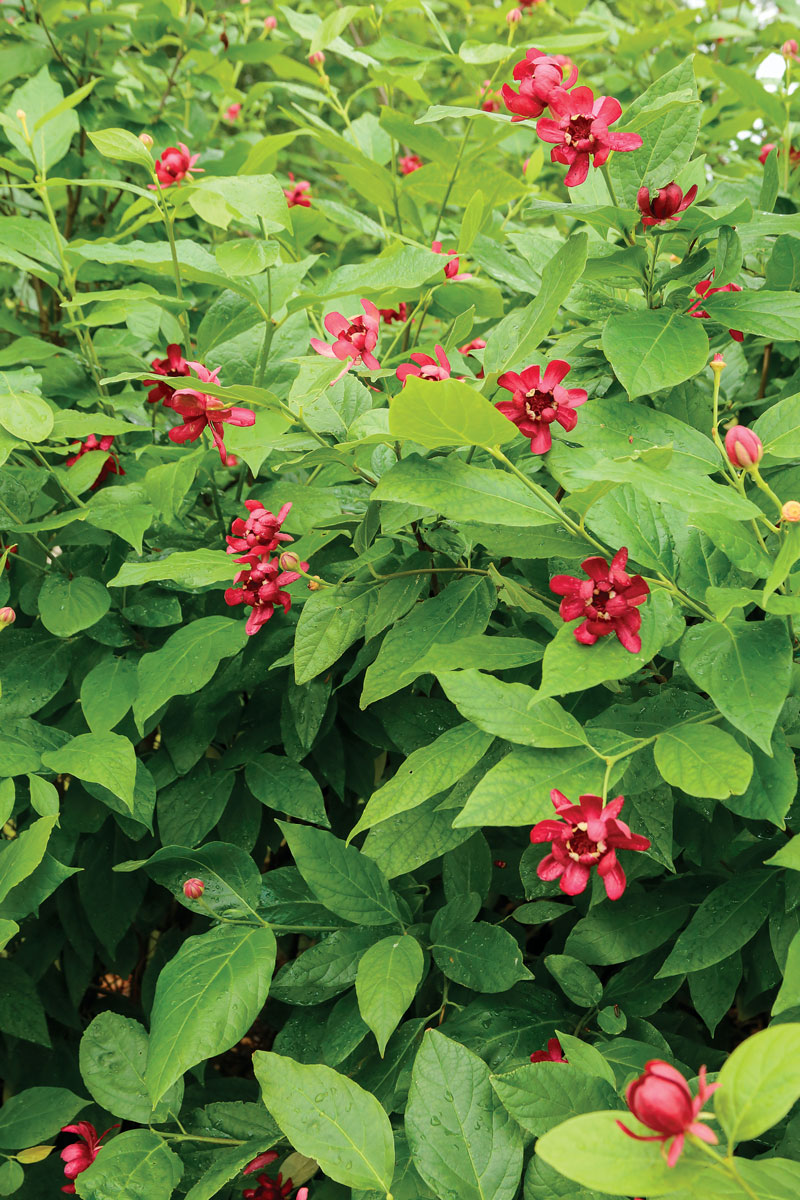
‘Aphrodite’ (C. ‘Aphrodite’, Zones 5–9) is undeniably a bruiser, bigger than other cultivars by almost every measure. Reddish-purple flowers up to 4 inches wide open to reveal creamy yellow markings on the innermost tepals. The flowers are held on longer stalks, so they are less masked by the leaves. ‘Aphrodite’ resembles ‘Hartlage Wine’, but it blooms about two weeks later. More-refined noses smelled plum and spice in the light, fruity fragrance, but the scent eluded me completely. The lush green leaves, tinged with bronze early in the season, are among the longest of any sweetshrub’s. Fall color comes on late, turning from a mix of bright yellow and green to rich golden-yellow before the leaves drop. At 9 feet tall and 13 feet wide, ‘Aphrodite’ was a behemoth, even dwarfing ‘Hartlage Wine’, which is also pretty big. The robust, bushy plants occasionally appeared a little unruly or unbalanced because of long, vigorous stems, which were notable on young plants or late in the season. Cold hardiness has not been an issue here, despite the fact that California sweetshrub is part of its genetic makeup.
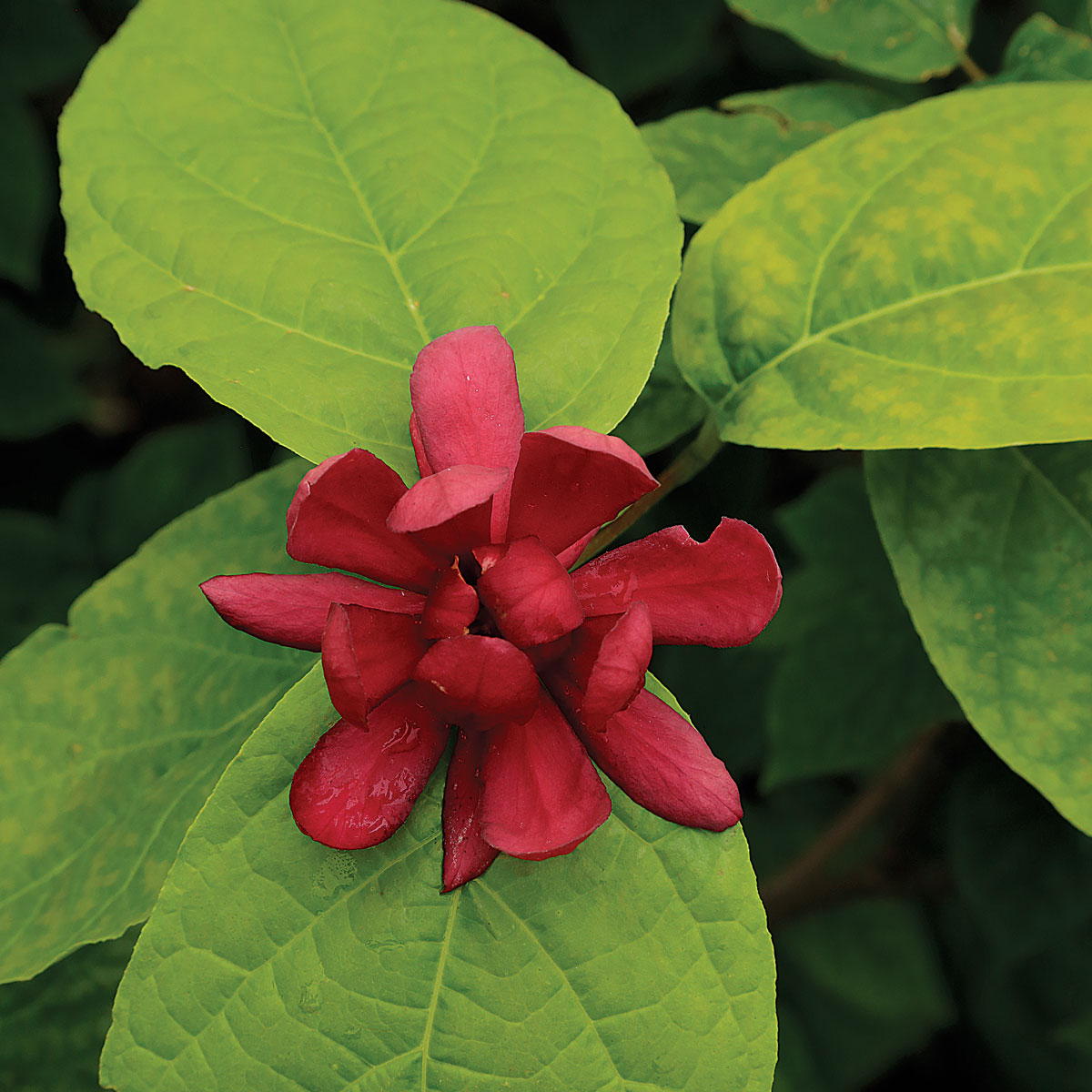
‘Hartlage Wine’ (C. × raulstonii ‘Hartlage Wine’, Zones 5–9) is a hybrid that originated at North Carolina State University’s JC Raulston Arboretum in 1991. Like the other hybrid cultivars, ‘Hartlage Wine’ has lush foliage, a vigorous and robust habit, and heavy flower production from late spring to midsummer. It’s named for my friend Richard Hartlage, who made the original cross when he was a college student. The 3-inch flowers emerge burgundy-red and fade to a soft puce color, with near-white inner tepals and a light, fruity fragrance. The dense, bushy plants benefit from occasional light pruning to keep wayward stems in check. In fall the leaves turn deep yellow but drop quickly, even while the remaining foliage is still green.
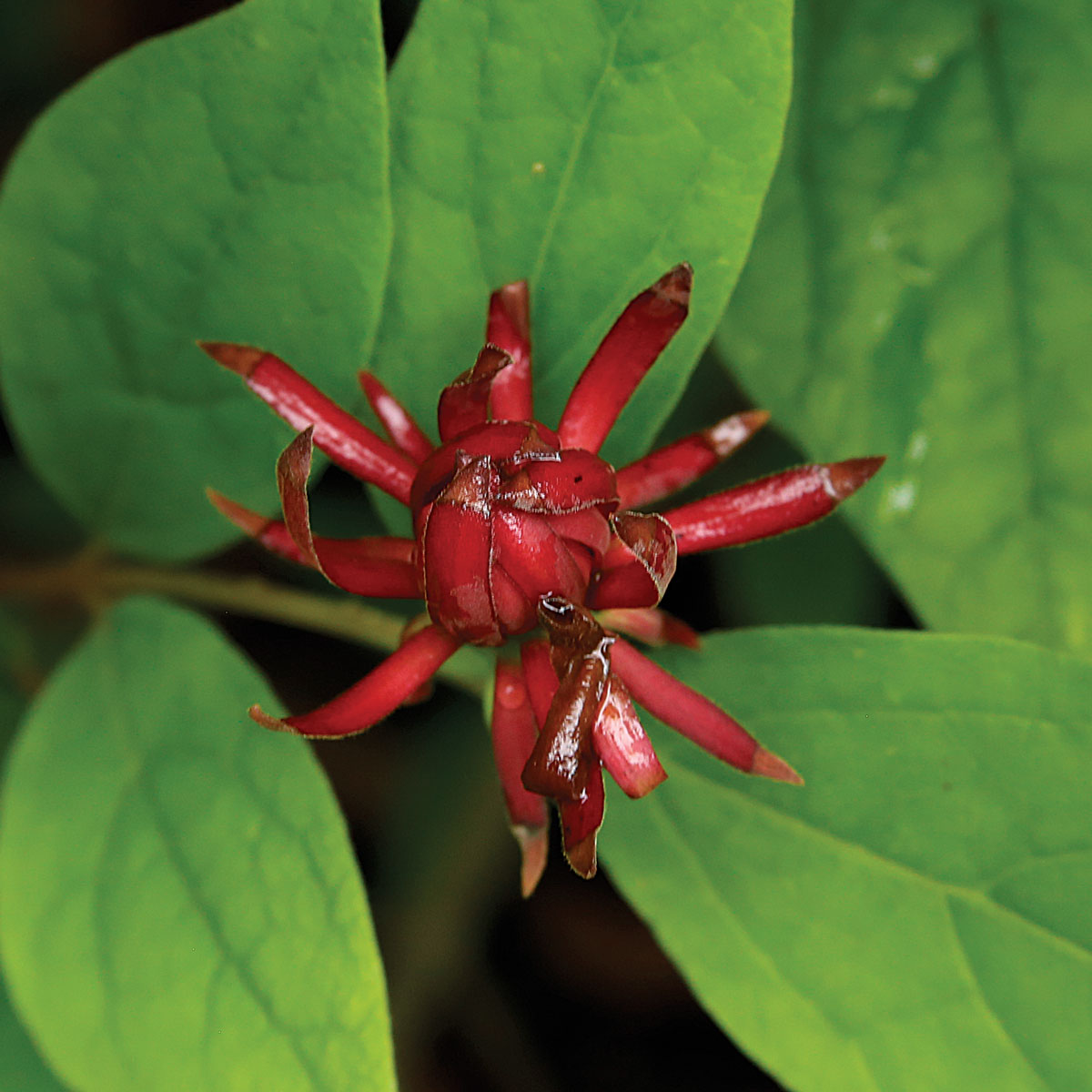
Roy’s Dark Red™ (C. floridus ‘KLMY’, Zones 4–9) has midwestern roots, having been selected in southern Wisconsin by acclaimed nurseryman Roy Klehm. It fell short of top marks in our trial but is deserving of an honorable mention. While more maroon than red, the flowers have a slight silvery sheen and are quite dark compared to other selections. On most days, I found Roy’s Dark Red™ to have a heavy, sweet fragrance; warm temperatures enhance the scent, but sometimes there was barely a hint. The 2-inch flowers are so dark that they can be easily overlooked in the axils of the glossy dark green leaves. Some foliar chlorosis on older foliage detracted from the healthy glow of the lustrous new leaves. The fall color is dirty yellow with a brownish cast, which makes the plants look a little rough overall. At less than 5 feet tall, Roy’s Dark Red™ is one of the shortest cultivars, but its compact habit was less obvious by the fifth year, when suckers had filled the space between plants.
Richard’s Favorite Sweetshrub
|
|
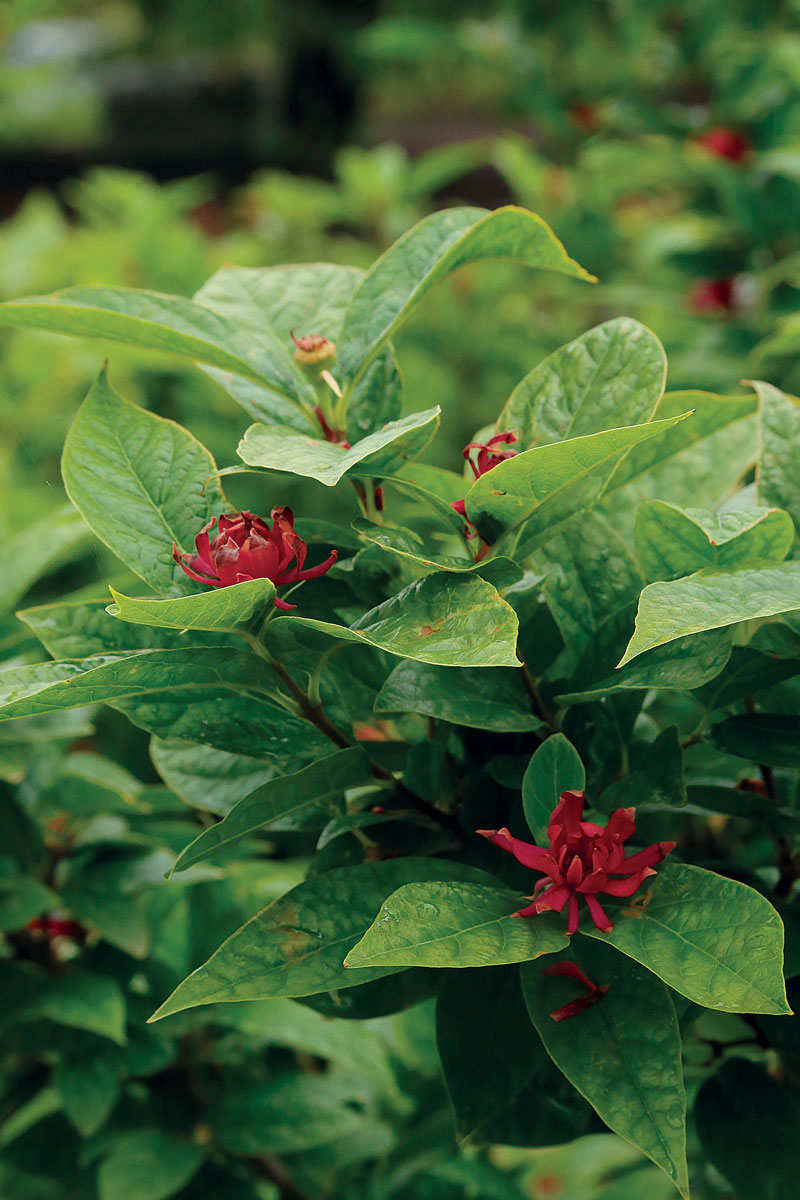
A few years ago, I was asked to do a smell check on ’Michael Lindsey’ (C. floridus ‘Michael Lindsey’, Zones 4b–9). I thought at the time that it had the best fruity fragrance of any of the plants in the trial. Its dark maroon flowers are among the smallest—just a tad larger than those of the species—and are freely produced in late spring. The glossy leaves are of a noticeably darker green than those of other cultivars, and in autumn they turn a beautiful bright yellow with amber tones. ‘Michael Lindsey’ suckers like the species and forms a well-balanced rounded habit, second only to C. floridus var. glaucus ‘Purpureus’ in quality. The suckering nature amplifies the plant’s girth—it grows more than 8 feet wide and 6 feet tall. ‘Michael Lindsey’ is an older cultivar, selected and introduced by plantsman Allen Bush.
| How-to |
Pruning 101
Pruning sweetshrubs is rarely necessary, but when it is needed there are a few points to keep in mind. Sweetshrubs bloom on old wood (the previous year’s growth) as well as on new wood, so removing old stems in winter or spring will reduce the early flower show. Pruning—again, only if needed—is generally best done in summer, after flowering. If the plant has gotten too large or is a bit unruly, pruning to reshape and to control size is best done after flowering too.
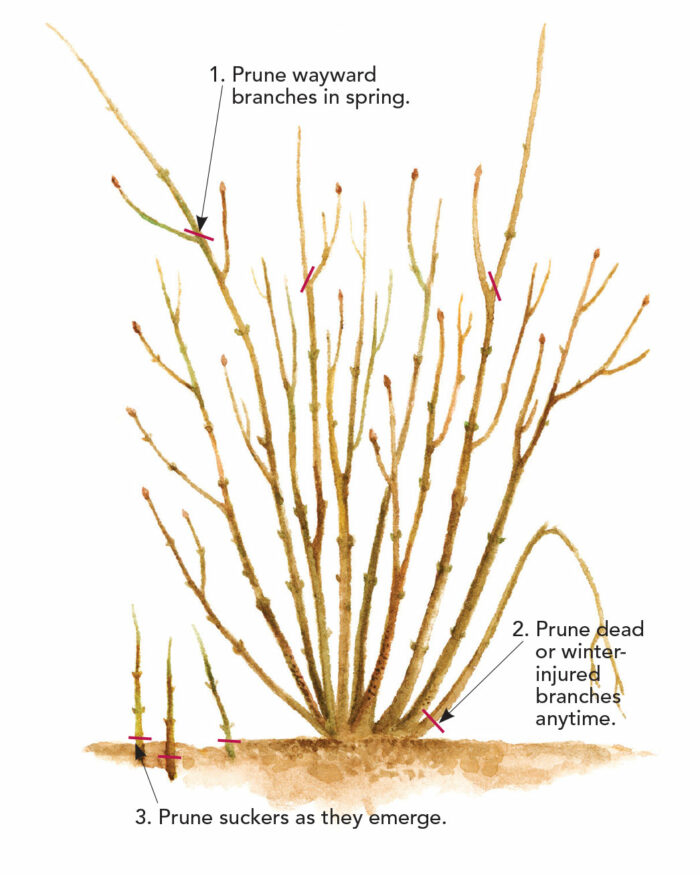
There are a few exceptions to the summer pruning rule:
1. A little shaping in spring is fine. To even out an imbalanced habit, you may choose to remove a few wayward or overly vigorous branches in spring.
2. If it’s dead, timing isn’t important. Winter-injured or dead branches can be removed at any time to improve the appearance of the shrub.
3. Remove suckers right away. Due to its suckering nature, eastern sweetshrub forms thickets over time. To reduce the shrub’s width and keep things tidier, remove suckers as they emerge.
A note on hybrids
Interspecific hybrids have changed the face of sweetshrubs forever. The first sweetshrub hybrid resulted from crosses made in 1991 by Richard Hartlage when he was a student at North Carolina State University (NCSU). One of the original seedlings appeared to be a hybrid between Sinocalycanthus chinensis and Calycanthus floridus and was given the tongue-twisting botanical name × Sinocalycalycanthus raulstonii to distinguish its intergeneric origin as well as to recognize J. C. Raulston, professor and arboretum director at NCSU at the time.
My memories of the subsequent years were of a lot of discussion and hand-wringing to iron out the nomenclature. When that was all done, taxonomists had moved Sinocalycanthus into Calycanthus, downgrading the cross from intergeneric to interspecific. They settled on Calycanthus × raulstonii to describe the C. floridus × C. chinensis (née Sinocalycanthus chinensis) cross, and honored Richard’s original clone as ‘Hartlage Wine’. Tom Ranney, an ingenious plant breeder at NCSU, followed up with two more exceptional hybrids in the early 2000s. ‘Aphrodite’ is a cross between C. chinensis and C. occidentalis, and white-flowered ‘Venus’ is a complex hybrid cross of C. chinensis, C. floridus ‘Athens’, and C. occidentalis. ‘Solar Flare’ and ‘Dark Secret’ are more recent hybrid introductions with the same American and Chinese parentage as ‘Hartlage Wine’.
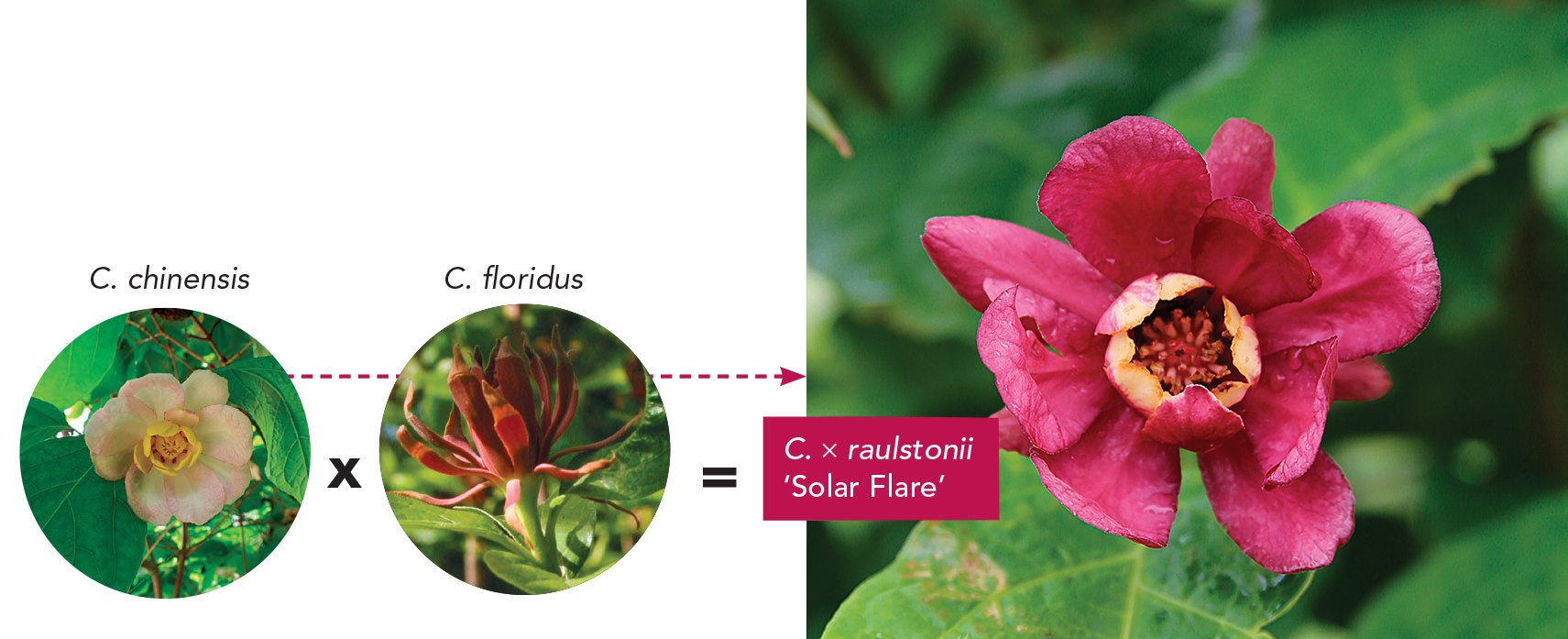

• Sweetshrub trial results •
|
*estimated width due to suckering habit
[ KEY ]
★★★★ Excellent
★★★ Good
★★ Fair
★ Poor
NR Not rated (new to trial)
Richard Hawke is an expert plantsman and the director of ornamental plant research at the Chicago Botanic Garden in Glencoe, Illinois.
Fine Gardening Recommended Products

The Crevice Garden: How to make the perfect home for plants from rocky places
Fine Gardening receives a commission for items purchased through links on this site, including Amazon Associates and other affiliate advertising programs.

ARS Telescoping Long Reach Pruner
Fine Gardening receives a commission for items purchased through links on this site, including Amazon Associates and other affiliate advertising programs.

Gardener's Log Book from NYBG
Fine Gardening receives a commission for items purchased through links on this site, including Amazon Associates and other affiliate advertising programs.

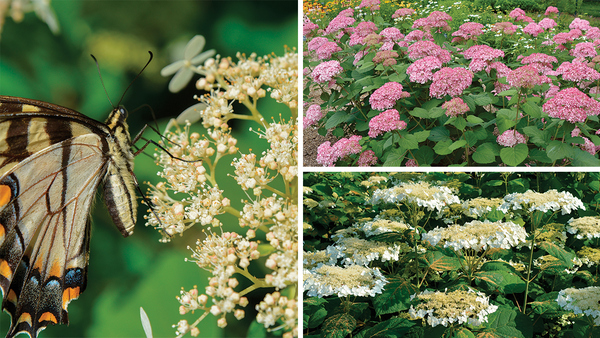
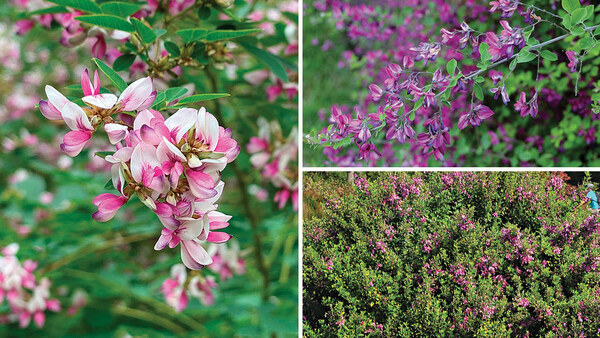

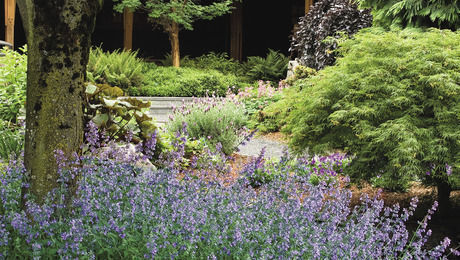













Comments
Log in or create an account to post a comment.
Sign up Log in